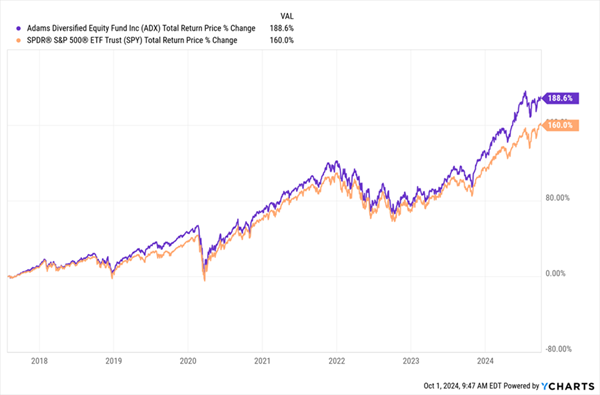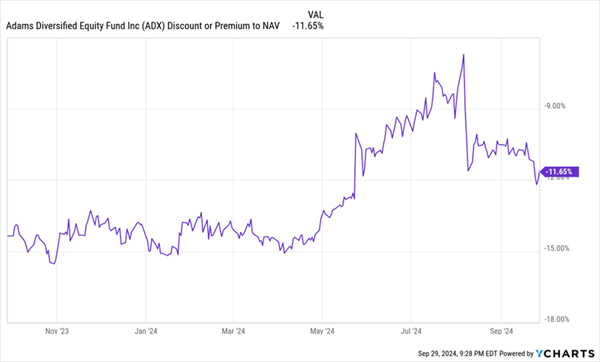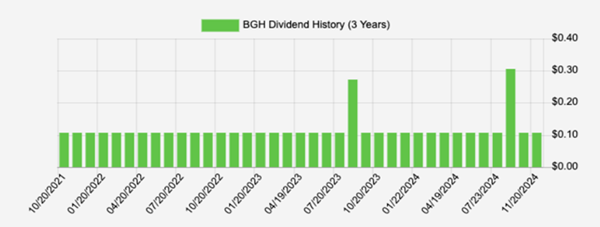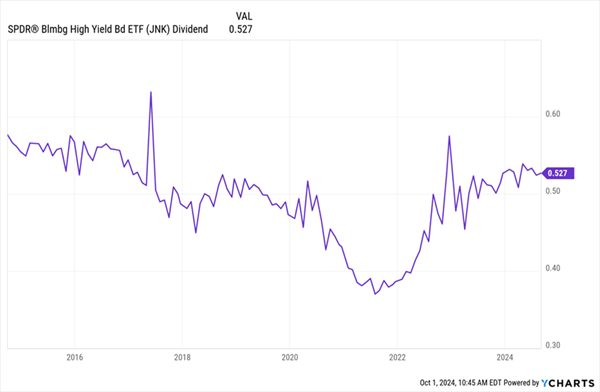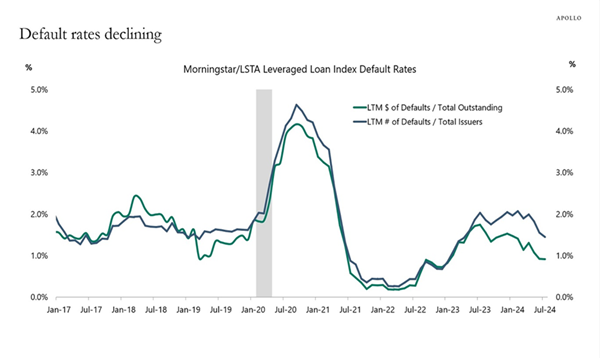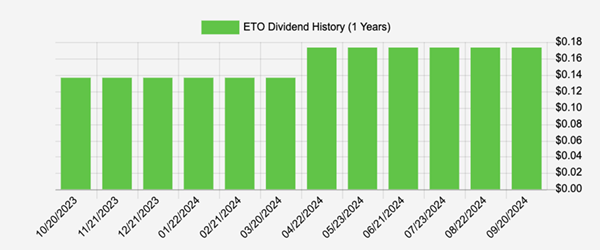This 3-Click “Mini-Portfolio” Holds Stocks And Bonds (And Yields 8.1%)
Having a diversified portfolio is pretty much Investing 101, right?
I mean, it’s one of the first things we all learn as investors. But there’s a problem here: Going for balance in “regular” stocks, bonds or ETFs can mean leaving income on the table.
To see what I’m getting at here, check out the average yields on two ETFs many people buy for stock and bond exposure. For stocks, I likely don’t have to tell you about the SPDR S&P 500 ETF Trust (SPY). It’s the popular S&P 500 tracker. And it yields a microscopic 1.2%.
There are plenty of options on the bond side, but let’s go with a fairly high-yielding ETF, the SPDR Bloomberg High-Yield Bond ETF (JNK). It holds the high-yield, or “junk,” bonds many investors (wrongly, as we’ll see in a moment) see as too risky.
JNK yields 6.4%, which is obviously a lot better than 1.2%. But if you average the two together, you get just a 3.8% yield.
3 Clicks for Instant Diversification—and an 8.1% Yield
Good news is, there’s an asset class out there that gives us the same level of diversification but with way more income: I’m talking 8%+ yields, with payouts often going out monthly.
If you’ve been reading me for a while, or are a member of my CEF Insider service, you likely know where I’m heading next: to closed-end funds (CEFs), which yield around 8% on average as I write this.
Below I’ve got three CEFs (one holding stocks, one holding high-yield bonds and one holding a nice stock-bond combo) that, when taken together, pay an average yield of 8.1%. Two of these funds pay dividends monthly, too.
Let’s talk about them, starting with our equity CEF.
Stocks: Skip SPY, Go With ADX Instead
As CEF Insider’s Investment Strategist, I’ve had plenty of occasions to speak to the staff at Adams Funds, sponsor of the Adams Diversified Equity Fund (ADX). These conversations have always left me impressed. These people are professional, dedicated to shareholder value and committed to ensuring stable and reliable payouts.
ADX, which yields 8.2% today, also gives us access to a level of institutional experience that’s very hard (if not impossible) to find elsewhere, inside or outside CEFs: The fund was launched in 1929, on the eve of the Great Depression. That’s nearly a century of dealing with anything the market can throw at it.
As we’ll see in a moment, the result of that long experience has been market-beating performance.
A long-time knock on ADX is that up until earlier this year, it paid most of its dividend in as a one-time, year-end special payout that fluctuated according to the fund’s net asset value (NAV, or the value of its portfolio). That caused some CEF investors to give ADX a pass in favor of monthly or quarterly paying funds.
Management has now dealt with that issue: Under a change brought in earlier this year, ADX promises to pay no less than 2% of NAV per quarter, for an average 8% yield on NAV. That adds stability to the payout while still letting it ride with the value of the fund’s portfolio.
So if you own SPY or one of its cousins now, consider swapping it out for ADX. You’ll get exposure to many of the same stocks, and ADX’s dividend policy means it essentially “converts” stock gains to dividends, giving you a solid income stream if you draw these funds off as cash.
And if you reinvest your payouts, you get a real shot at beating the market. ADX has crushed SPY since we added it to the CEF Insider portfolio in July 2017:
ADX Outruns SPY, Driven By Dividends
Now let’s talk discounts: As I write this, ADX trades at an 11.7% discount to NAV, meaning we get its portfolio of top-quality stocks, including Microsoft (MSFT), Apple (AAPL), and Amazon.com (AMZN), for around 88 cents on the dollar.
ADX’s Discount Drops, With a Rebound Likely
As you can see above, the discount narrowed to just below 7% earlier this year, on news of the new dividend policy. It has since fallen back, but as interest rates decline and investors go looking for higher yields, I expect them to flock back to ADX, drawn by its new dividend policy, its strong performance history and its high yield, too
High-Yield Bonds: Think BGH, Not JNK
For bonds, let’s go with the Barings Global Short Duration High Yield Fund (BGH).
BGH focuses on high-yield corporate bonds and yields 8.4%, while focusing on short-term bonds as a way to lower the risks of those bonds falling in value during a market panic, since they come to term so quickly.
The fund’s payout is monthly and steady, having gone unchanged for years, with the odd special dividend (the spikes below), too:
Would You Rather Have This Serene Payout …
That’s a much bigger dividend than JNK offers. And even though JNK does pay monthly, BGH’s payout is a picture of calm in comparison to JNK’s “squirrely” dividend:
… Or This Skittish One?
By lending to large, established companies, BGH generates reliable cash flow. Limiting its investments to short-term bonds also lowers the risk of these investments going sour.
And as you can see below, BGH’s discount is still wide, at around 6%, but it’s trending higher—a very nice setup.
BGH’s Discount Sale Is Ending
I see this one trading at a premium as more income-seekers make their way to bonds as Treasuries yield less and CDs mature.
Finally, a word on junk bonds and the risk of defaults, which is overblown. As we discussed in the September CEF Insider, American companies are far from struggling to meet their obligations, with fewer than 1% of issuers defaulting:
So don’t let the words “junk” or “high-yield” put you off—and cause you to miss out on BGH and its steady (and monthly paid) 8.4%-yielding dividend.
The All ’Rounder: The Eaton Vance Tax-Advantaged Global Dividend Opportunities Fund (ETO)
The Eaton Vance Tax-Advantaged Global Dividend Opportunities Fund (ETO) gives us exposure to top US large caps like Microsoft and Apple, much like ADX. But US stocks make up just 48% of the portfolio.
The next-biggest slice (36%) goes to international equities like Nestle SA, pharmaceutical firm Sanofi and Compass Group PLC, a British food-service firm.
The remainder (around 16%) is in fixed-income assets, mostly investment-grade bonds, to add a bit of extra stability. The whole package delivers a 7.8% dividend, paid monthly. And management recently raised it:
ETO Shareholders Get a Raise
Trading at an 8.7% discount to NAV as I write this, BGH offers a smart blend of growth and income at a bargain price and, as with BGH, that discount is slowly disappearing.
Another Discount With Momentum
To cap it off, the fund has also delivered a strong annualized total return of 9.6% over the last decade, adding strong performance to our high, rising monthly payout and “stair-stepping” discount.
Why Wall Street Is Hiding CEFs From You (Including These Five Payers Up To 9.6%)
When you see the kinds of gains and upside CEFs like these three offer, one question invariably leaps to mind: “Why doesn’t everyone invest in CEFs?”
The answer may surprise you: Wall Street and the business media would much prefer you buy ETFs: They just require a lot less explanation (read: work) to sell to investors.
It’s a frankly infuriating situation, and I’ve got the full story on it for you in a Special Investor Bulletin. You can read it, for free, right here.
I hope you’ll take a look at my analysis, because it shines a light on Wall Street’s shenanigans and links you to a FREE downloadable Special Report revealing 5 CEFs I urge all investors to buy now.
Don’t miss out! Click here to read this exclusive Investor Bulletin and get your chance to buy these five 9.6%-payers now, while they’re still cheap.
This post originally appeared at Contrarian Outlook.
Category: Dividend Stocks


